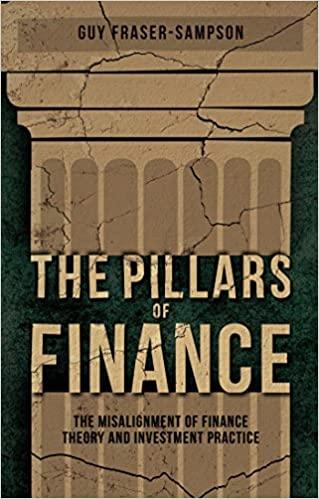Question
5 years ago, Barton Industries issued 25-year noncallable, semiannual bonds with a $900 face value and a 12% coupon, semiannual payment ($54 payment every 6
5 years ago, Barton Industries issued 25-year noncallable, semiannual bonds with a $900 face value and a 12% coupon, semiannual payment ($54 payment every 6 months). The bonds currently sell for $845.87. If the firm's marginal tax rate is 40%, what is the firm's after-tax cost of debt? Round your answer to 2 decimal places. Do not round intermediate calculations.
Barton Industries can issue perpetual preferred stock at a price of $56 per share. The stock would pay a constant annual dividend of $3.00 per share. If the firm's marginal tax rate is 40%, what is the company's cost of preferred stock? Round your answer to 2 decimal places.
Barton Industries estimates its cost of common equity by using three approaches: the CAPM, the bond-yield-plus-risk-premium approach, and the DCF model. Barton expects next year's annual dividend, D1, to be $1.60 and it expects dividends to grow at a constant rate g = 3.7%. The firm's current common stock price, P0, is $25.00. The current risk-free rate, rRF, = 4%; the market risk premium, RPM, = 5.3%, and the firm's stock has a current beta, b, = 1.1. Assume that the firm's cost of debt, rd, is 6.67%. The firm uses a 3.3% risk premium when arriving at a ballpark estimate of its cost of equity using the bond-yield-plus-risk-premium approach. What is the firm's cost of equity using each of these three approaches? Round your answers to 2 decimal places.
CAPM cost of equity: %
Bond yield plus risk premium: %
DCF cost of equity: %
What is your best estimate of the firm's cost of equity?
Barton Industries expects next year's annual dividend, D1, to be $2.10 and it expects dividends to grow at a constant rate g = 5%. The firm's current common stock price, P0, is $20.80. If it needs to issue new common stock, the firm will encounter a 5.1% flotation cost, F. Assume that the cost of equity calculated without the flotation adjustment is 12% and the cost of old common equity is 11.5%. What is the flotation cost adjustment that must be added to its cost of retained earnings? Round your answer to 2 decimal places. Do not round intermediate calculations.
What is the cost of new common equity considering the estimate made from the three estimation methodologies? Round your answer to 2 decimal places. Do not round intermediate calculations.
Barton Industries expects that its target capital structure for raising funds in the future for its capital budget will consist of 40% debt, 5% preferred stock, and 55% common equity. Note that the firm's marginal tax rate is 40%. Assume that the firm's cost of debt, rd, is 7.9%, the firm's cost of preferred stock, rp, is 7.4% and the firm's cost of equity is 11.9% for old equity, rs, and 12.58% for new equity, re. What is the firm's weighted average cost of capital (WACC1) if it uses retained earnings as its source of common equity? Round your answer to 3 decimal places. Do not round intermadiate calculations.
%
What is the firms weighted average cost of capital (WACC2) if it has to issue new common stock? Round your answer to 3 decimal places. Do not round intermadiate calculations.
%
The Holmes Company's currently outstanding bonds have a 9% coupon and a 12% yield to maturity. Holmes believes it could issue new bonds at par that would provide a similar yield to maturity. If its marginal tax rate is 40%, what is Holmes's after-tax cost of debt? Round your answer to two decimal places.
Torch Industries can issue perpetual preferred stock at a price of $61.00 a share. The stock would pay a constant annual dividend of $6.50 a share. What is the company's cost of preferred stock, rp? Round your answer to two decimal places.
Pearson Motors has a target capital structure of 30% debt and 70% common equity, with no preferred stock. The yield to maturity on the company's outstanding bonds is 10%, and its tax rate is 40%. Pearson's CFO estimates that the company's WACC is 13.50%. What is Pearson's cost of common equity? Do not round intermediate calculations. Round your answer to two decimal places.
Empire Electric Company (EEC) uses only debt and common equity. It can borrow unlimited amounts at an interest rate of rd = 9% as long as it finances at its target capital structure, which calls for 35% debt and 65% common equity. Its last dividend (D0) was $2.40, its expected constant growth rate is 5%, and its common stock sells for $25. EEC's tax rate is 40%. Two projects are available: Project A has a rate of return of 12%, and Project B's return is 10%. These two projects are equally risky and about as risky as the firm's existing assets.
What is its cost of common equity? Round your answer to two decimal places. Do not round your intermediate calculations.
%
What is the WACC? Round your answer to two decimal places. Do not round your intermediate calculations.
%
Step by Step Solution
There are 3 Steps involved in it
Step: 1

Get Instant Access to Expert-Tailored Solutions
See step-by-step solutions with expert insights and AI powered tools for academic success
Step: 2

Step: 3

Ace Your Homework with AI
Get the answers you need in no time with our AI-driven, step-by-step assistance
Get Started


